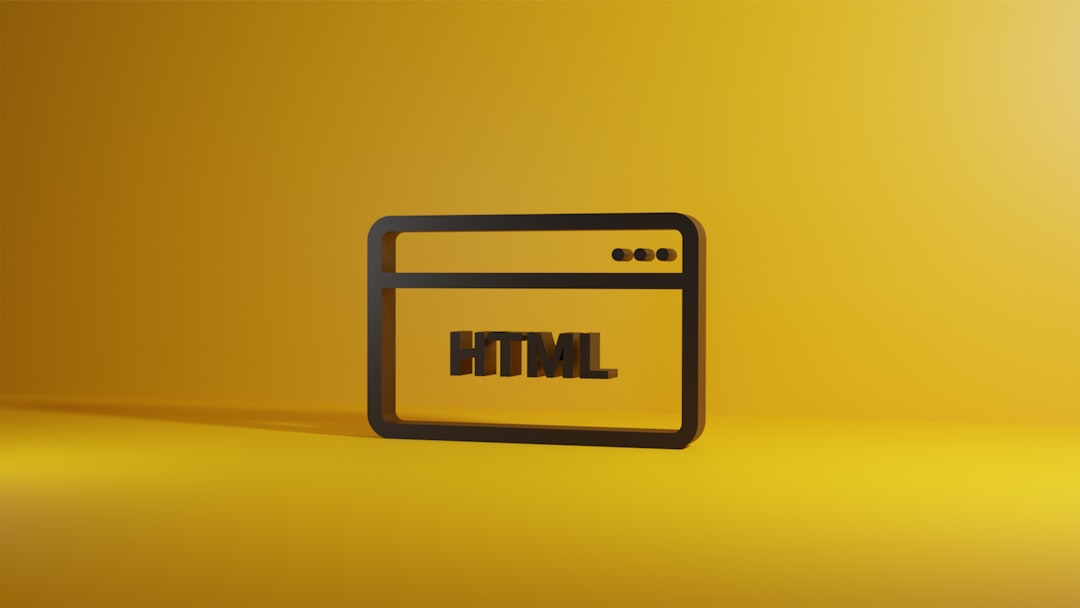Support our educational content for free when you purchase through links on our site. Learn more
What Can I 3D Print to Make Money? 10 Innovative Ideas for 2025! 💰

Are you ready to turn your passion for 3D printing into a profitable venture? If you’ve ever wondered, “What can I 3D print to make money?” you’re in for a treat! In this comprehensive guide, we’ll explore 10 innovative ideas that can help you cash in on the booming 3D printing market. Did you know that the global 3D printing market is projected to reach a staggering $44.39 billion by 2029? That’s a lot of opportunities waiting for savvy entrepreneurs like you!
From creating custom jewelry to offering on-demand printing services, the possibilities are endless. Whether you’re a seasoned pro or just starting out, this article will equip you with the knowledge and inspiration you need to dive into the world of 3D printing for profit. So, grab your printer and let’s get started on this exciting journey!
Key Takeaways
- Explore Diverse Opportunities: Discover 10 unique ideas for monetizing your 3D printing skills, from custom designs to replacement parts.
- Invest in Quality Equipment: A reliable 3D printer is essential for producing high-quality products that attract customers.
- Find Your Niche: Specializing in a specific area can help you stand out in a competitive market.
- Market Your Creations: Utilize social media and online platforms to showcase your work and reach potential buyers.
- Stay Persistent: Building a successful 3D printing business takes time, dedication, and continuous learning.
Ready to take the plunge? 👉 Shop 3D Printers on: Amazon | Walmart | Etsy and start your journey today!
Table of Contents
- Quick Tips and Facts
- The Evolution of 3D Printing: A Profitable Journey
- How to Make Money with a 3D Printer: 10 Innovative Ideas
- How Much Can You Really Earn from 3D Printing?
- Exploring the Booming 3D Printing Market
- Tips for Maximizing Your 3D Printing Profits
- Success Stories: Real People Making Money with 3D Printing
- Common Challenges and How to Overcome Them
- Wrapping Up Your 3D Printing Adventure!
- Recommended Links for 3D Printing Success
- Frequently Asked Questions (FAQ)
- Reference Links for Further Reading
Quick Tips and Facts
💡 Did you know? The first functional 3D printer was invented way back in 1983! 🤯 We’ve come a long way since then, and now you can even launch a business with this incredible technology.
But before diving into the exciting world of 3D printing for profit, here are a few quick tips and facts to get you started:
- Quality over Quantity: Invest in a reliable 3D printer known for its precision and durability. A high-quality printer might cost more upfront, but it will save you headaches (and money!) in the long run.
- Niche Down: Don’t try to be everything to everyone. Focus on a specific niche within the 3D printing market, like jewelry, home decor, or even custom phone cases. This targeted approach helps you establish expertise and attract a loyal customer base.
- Master Your Software: Familiarize yourself with 3D design software like Tinkercad (beginner-friendly) or Fusion 360 (more advanced). The ability to create your own designs opens up a world of possibilities!
- Market Your Magic: Spread the word about your 3D printing prowess! Leverage social media platforms like Instagram and Etsy to showcase your creations and attract potential customers.
- Patience, Young Padawan: Building a successful 3D printing business takes time and dedication. Don’t get discouraged if you don’t see results overnight. Keep experimenting, learning, and refining your craft.
The Evolution of 3D Printing: A Profitable Journey
Remember those clunky dot matrix printers that sounded like a robot playing the drums? 🥁 3D printing has come a long way since its humble beginnings in the 1980s. What was once a niche technology used primarily for prototyping has exploded into a multi-billion dollar industry with applications in almost every sector imaginable.
Can I Make Money from 3D Printing? 10 Creative Ways to Profit in 2025! 💰
From creating intricate jewelry to producing life-saving medical devices, 3D printing is changing the way we design, manufacture, and even think about the world around us. And guess what? This revolution presents a golden opportunity for savvy entrepreneurs like you!
A Shift from Prototyping to Production
In the early days, 3D printing was primarily used for rapid prototyping. Engineers and designers could quickly create physical models to test and refine their ideas before committing to expensive manufacturing processes.
But as 3D printing technology advanced and became more affordable, a remarkable shift occurred. We began to see a transition from prototyping to actual production.
Now, businesses and individuals alike are using 3D printers to create end-use products, from custom-designed phone cases to intricate architectural models. This shift has opened up a world of possibilities for entrepreneurs looking to tap into the power of additive manufacturing.
How to Make Money with a 3D Printer: 10 Innovative Ideas
So, you’re ready to transform your 3D printer from a hobbyist’s toy into a money-making machine? Excellent choice! Here are 10 innovative ideas to get those creative gears turning:
- Design and Sell Your Own 3D Models: Are you a digital da Vinci? Put those design skills to work by creating and selling your own 3D models online. Platforms like Thingiverse and Cults3D offer vast marketplaces where you can connect with eager buyers looking for unique and innovative designs.
- Become a 3D Printing Service Bureau: Think of yourself as a 3D printing superhero, swooping in to save the day for businesses and individuals who need custom parts or prototypes but don’t have their own printer. Market your services locally or online, and be prepared to handle a wide range of projects.
- Craft Custom Creations: From personalized jewelry to quirky kitchen gadgets, the possibilities for creating and selling custom 3D printed products are virtually endless. Tap into your inner artisan and let your imagination run wild!
- Spare Parts Savior: Broken appliance? Missing game piece? No problem! Position yourself as the go-to source for replacement parts. People are often willing to pay a premium for a quick and convenient solution to their everyday woes.
- Miniature Marvels: The world of tabletop gaming and miniature painting is booming! Design and print highly detailed miniatures, terrain pieces, or gaming accessories to captivate this passionate community.
- Educational Endeavors: Inspire the next generation of makers and creators by offering 3D printing workshops or classes. Schools, libraries, and community centers are always on the lookout for engaging and educational programs.
- Artistic Adventures: Push the boundaries of traditional art forms by creating stunning 3D printed sculptures, jewelry, or even wearable art. Galleries and art enthusiasts are increasingly embracing the unique possibilities of 3D printed art.
- Home Decor Delights: From stylish vases to whimsical wall art, 3D printing allows you to create unique and personalized home decor items that are sure to impress.
- Gadget Guru: Design and print innovative phone cases, laptop stands, or other tech accessories that solve everyday problems and enhance the user experience.
- Cosplay Connoisseur: The world of cosplay is all about bringing fictional characters to life. Create and sell custom props, armor pieces, or accessories to help cosplayers take their costumes to the next level.
How Much Can You Really Earn from 3D Printing?
Ah, the million-dollar question (or perhaps a few thousand to start!). The earning potential of 3D printing is as diverse as the technology itself. It all depends on factors like:
- Your Niche: Some niches, like high-end jewelry or specialized medical devices, command higher prices than, say, novelty keychains.
- Your Target Market: Are you catering to budget-conscious consumers or businesses with deeper pockets?
- Your Marketing Savvy: Effective marketing can make all the difference in attracting customers and driving sales.
- Your Pricing Strategy: Finding the sweet spot between profitability and competitiveness is key.
Realistic Expectations:
While it’s unlikely that you’ll become an overnight millionaire, 3D printing offers a viable path to earning a side hustle income or even building a full-time business. Some 3D printing entrepreneurs report earning a few hundred dollars per month, while others generate a comfortable full-time income.
Remember: Success in 3D printing, like any business venture, requires hard work, dedication, and a willingness to adapt and evolve.
Exploring the Booming 3D Printing Market
The 3D printing market is experiencing explosive growth, and it’s showing no signs of slowing down! According to industry analysts, the global 3D printing market size is projected to reach a staggering $44.39 billion by 2029, growing at a CAGR of 20.3% from 2022 to 2029.
Key Growth Drivers:
- Increased Adoption Across Industries: From aerospace to healthcare to automotive, more and more industries are embracing the transformative power of 3D printing for prototyping, production, and even mass customization.
- Technological Advancements: We’re witnessing a constant stream of innovations in 3D printing technology, leading to faster printing speeds, improved material properties, and lower production costs.
- Rising Demand for Personalized Products: Consumers are increasingly seeking unique and personalized products, and 3D printing offers the perfect solution for on-demand customization.
Opportunities Abound:
This rapid market growth presents a wealth of opportunities for aspiring 3D printing entrepreneurs. Whether you’re looking to sell 3D printed products, offer design services, or provide 3D printing training, there’s a niche waiting for you to fill.
Tips for Maximizing Your 3D Printing Profits
Ready to turn your 3D printing passion into a profitable venture? Here are some expert tips to help you maximize your earnings:
- Invest in Quality: A reliable and precise 3D printer is the foundation of your business. Don’t skimp on this crucial investment. Consider factors like print quality, speed, and material compatibility when choosing a printer.
- Find Your Niche: Instead of trying to be everything to everyone, focus on a specific niche within the 3D printing market. This targeted approach allows you to develop expertise, build a loyal customer base, and command premium prices.
- Master Your Craft: Continuously hone your 3D printing skills and stay up-to-date on the latest technologies and trends. The more you know, the better equipped you’ll be to tackle complex projects and deliver exceptional results.
- Source Materials Wisely: The cost of 3D printing materials can eat into your profits. Research different suppliers and compare prices to find the best deals without sacrificing quality.
- Price Competitively: Research your competition and price your products or services accordingly. Consider factors like material costs, printing time, design complexity, and market demand.
- Market Like a Pro: Leverage the power of social media, online marketplaces, and local networking to get the word out about your 3D printing business. High-quality photos, engaging content, and targeted advertising can help you reach your ideal customers.
- Provide Exceptional Customer Service: Word-of-mouth is powerful! Go above and beyond to exceed your customers’ expectations. Prompt communication, attention to detail, and a willingness to go the extra mile can turn one-time buyers into loyal fans.
Success Stories: Real People Making Money with 3D Printing
Need some inspiration? Here are a few examples of real people who have turned their 3D printing passion into profitable businesses:
- Leo Mowry: This entrepreneur founded Shapeways, a groundbreaking 3D printing marketplace that allows anyone to design, make, and sell 3D printed products. Shapeways has become a global platform for creators and innovators, showcasing the vast potential of 3D printing.
- Stephanie Lee: Frustrated by the lack of stylish and functional prosthetic leg covers, Stephanie took matters into her own hands. She founded Infinite Biomedical Technologies, a company that uses 3D printing to create personalized and affordable prosthetic leg covers. Her inspiring story demonstrates the power of 3D printing to improve lives.
- Agustín Flowalistik: This talented artist combines his love of street art and 3D printing to create stunning and intricate sculptures. His work has been featured in galleries and exhibitions worldwide, proving that 3D printing can be a powerful medium for artistic expression.
Common Challenges and How to Overcome Them
While 3D printing offers incredible opportunities, it’s not without its challenges. Here are a few common hurdles you might encounter and some strategies for overcoming them:
- Competition: As the 3D printing market becomes increasingly crowded, it’s essential to differentiate yourself from the competition. Focus on a niche, offer unique products or services, and provide exceptional customer service.
- Technical Difficulties: 3D printers can be finicky beasts. Be prepared to troubleshoot technical issues, experiment with different materials and settings, and invest in ongoing learning and skill development.
- Marketing and Sales: Getting the word out about your 3D printing business can be challenging. Explore a variety of marketing channels, from social media to online marketplaces to local networking.
- Pricing: Finding the right price point for your products or services can be tricky. Consider factors like material costs, printing time, design complexity, and market demand.
- Time Management: Building a successful 3D printing business takes time and dedication. Be prepared to put in the hours, especially in the early stages.
Wrapping Up Your 3D Printing Adventure!
As we wrap up this deep dive into the world of 3D printing for profit, it’s clear that the opportunities are as vast as your imagination! From creating custom jewelry to offering on-demand printing services, the potential to make money with a 3D printer is limited only by your creativity and determination.
Key Takeaways:
- Invest in Quality Equipment: A reliable 3D printer is your best friend.
- Find Your Niche: Specializing in a specific area can set you apart from the competition.
- Market Your Skills: Use social media and online marketplaces to showcase your work and attract customers.
- Stay Persistent: Building a successful business takes time, but with dedication, you can achieve your goals.
So, are you ready to take the plunge? The world of 3D printing is waiting for you to leave your mark! 🌟
Recommended Links
- 👉 Shop 3D Printers on: Amazon | Walmart | Etsy
- Explore 3D Printing Materials: Amazon | eBay
- Books on 3D Printing:
Frequently Asked Questions (FAQ)

What are the most profitable items to 3D print and sell?
The Most Profitable Items
The profitability of 3D printed items varies based on market demand and niche. Some of the most lucrative products include:
- Jewelry: Custom-designed pieces can fetch high prices.
- Home Decor: Unique vases, wall art, and decorative items are always in demand.
- Prototyping Services: Offering rapid prototyping for businesses can yield high returns.
- Replacement Parts: Items like appliance parts or automotive components can be sold at a premium.
Read more about “Can I Make Money from 3D Printing? 10 Creative Ways to Profit in 2025! 💰”
How do I start a 3D printing business from home?
Steps to Start a Home-Based 3D Printing Business
- Research Your Market: Identify a niche that interests you and has demand.
- Invest in Equipment: Purchase a reliable 3D printer and materials.
- Create a Business Plan: Outline your goals, target market, and marketing strategies.
- Build an Online Presence: Set up a website or social media accounts to showcase your work.
- Network: Join local maker groups or online communities to connect with potential customers.
Read more about “What Products Can Be 3D Printed? Discover 75 Amazing Creations! 🚀”
What are the best 3D printing ideas for beginners to make money?
Beginner-Friendly Ideas
- Simple Home Accessories: Items like coasters, planters, or keychains are easy to design and print.
- Customized Phone Cases: These are popular and can be tailored to individual preferences.
- Toys and Miniatures: Start with simple designs and expand as you gain confidence.
- Artistic Prints: Create unique sculptures or decorative items to sell.
Read more about “Can I Sell Anything I 3D Print? 10 Essential Insights You Need to Know! 🤑”
Can I sell 3D printed items on Etsy or eBay?
Selling on Etsy and eBay
Yes, both platforms are excellent for selling 3D printed items. Etsy is particularly popular for handmade and custom products, while eBay can reach a broader audience. Ensure you follow their guidelines regarding intellectual property and product quality.
What kind of 3D printed products are in high demand?
High-Demand Products
- Cosplay Accessories: Items like helmets, props, and armor pieces are highly sought after.
- Medical Models: Custom anatomical models for educational purposes are in demand.
- Functional Tools: Items like tool holders or organizers can attract DIY enthusiasts.
Read more about “12 Fascinating Examples of 3D Printing That Will Blow Your Mind! … 🚀”
How much money can I make from 3D printing and selling custom phone cases?
Earnings from Custom Phone Cases
The profit margin on custom phone cases can vary widely based on design complexity and market pricing. On average, sellers can earn anywhere from $5 to $30 per case, depending on the materials used and the uniqueness of the design.
What are the legal considerations for starting a 3D printing business and selling printed items?
Legal Considerations
- Intellectual Property: Ensure that your designs do not infringe on existing patents or copyrights.
- Business Licensing: Check local regulations regarding business licenses and permits.
- Taxes: Understand your tax obligations as a business owner, including sales tax for products sold.
Reference Links
- 3D Printing Market Growth
- How to Make Money with a 3D Printer – Shopify
- 3D Printing for Dummies
- 3D Printing Handbook
With this knowledge, you’re now equipped to embark on your 3D printing journey! Whether you’re looking to make a little extra cash or launch a full-fledged business, the world of 3D printing is ripe with possibilities. Happy printing! 🎉




